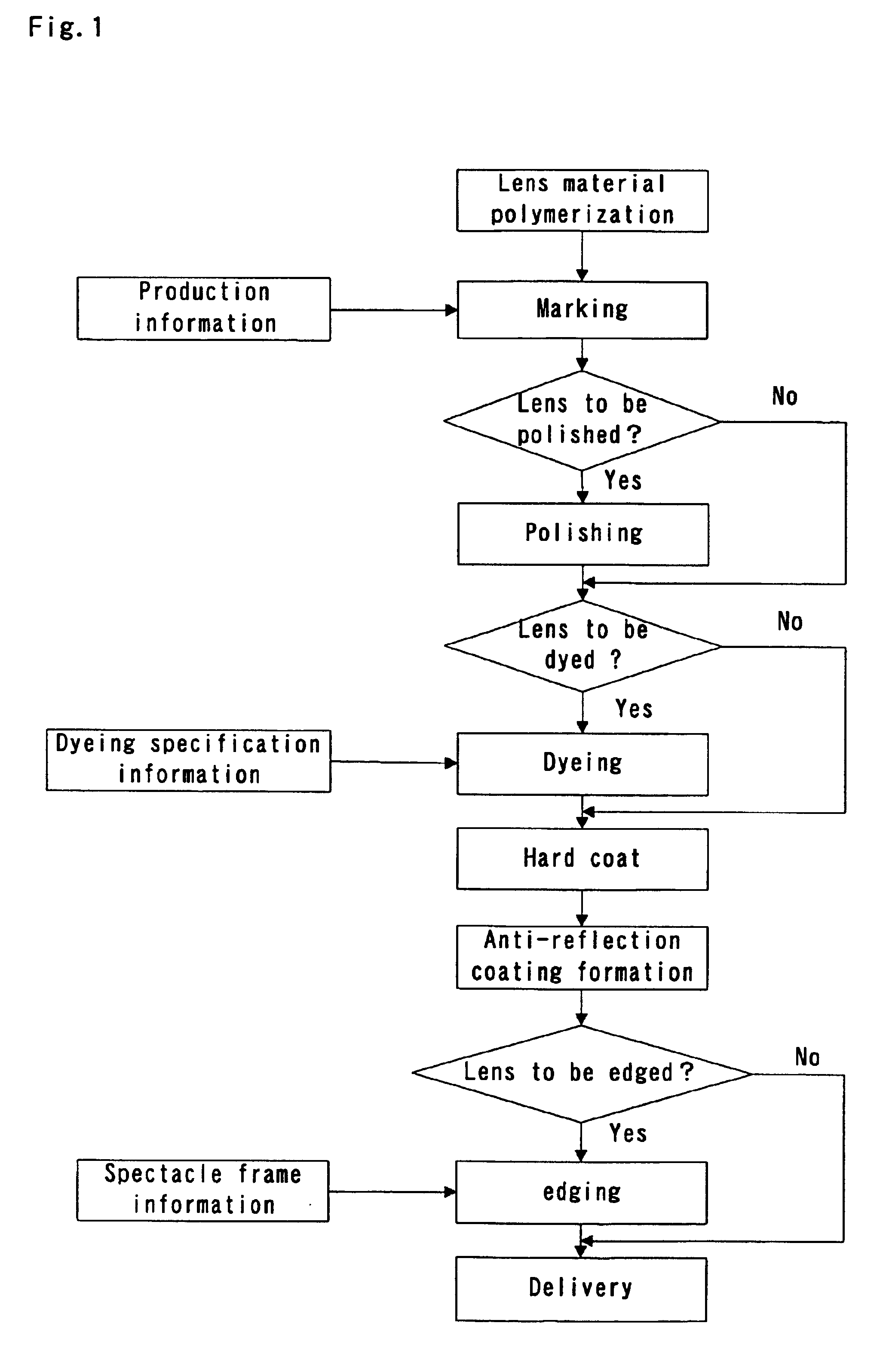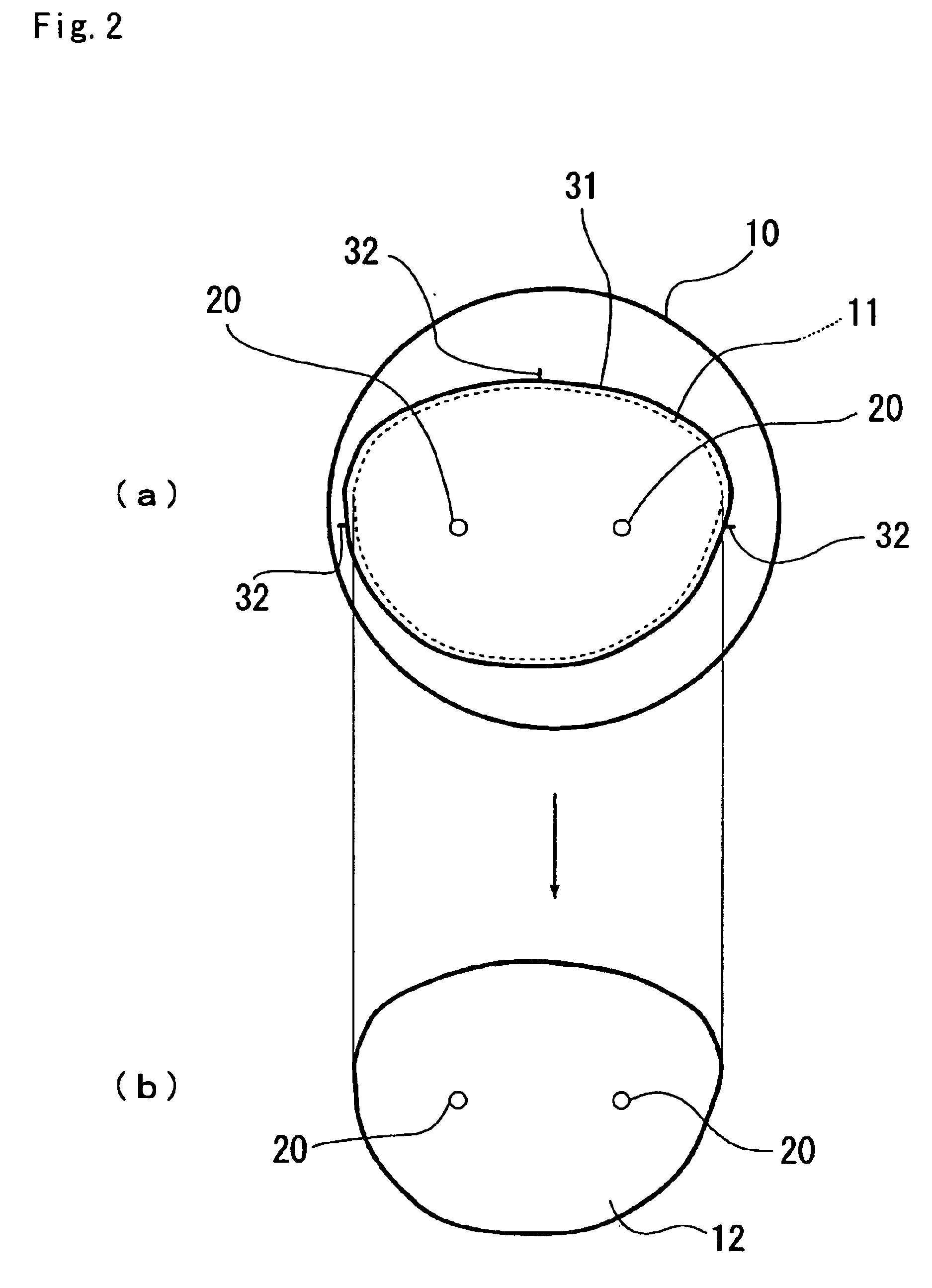Method for producing spectacle lens and lens processing system
a processing system and lens technology, applied in the field of spectacle lens and lens processing system, can solve the problems of degrading production yield, achieve the effects of reducing manpower and inspection time, reducing the variation of decided accuracy, and improving production yield
- Summary
- Abstract
- Description
- Claims
- Application Information
AI Technical Summary
Benefits of technology
Problems solved by technology
Method used
Image
Examples
example 2
A progressive multi-focal lens made from a plastic material in this example has a specification in which the lens is colorless and is to be subjected to thinning work and edging.
A fitting point as a lens reference position was determined from concealed marks 20 depicted on the outer surface (objective side) of a lens 10b by using the lens processing system shown in FIG. 3. On the basis of the lens reference position, an edging line 31b shown in FIG. 4(b) was depicted by using a carbon dioxide laser as a marking means. Processing data for depicting reference position marks for dyeing were not required to be prepared because the progressive multi-focal lens in this example was specified to be colorless.
At a polishing step, the progressive multi-focal lens was formed into a specific positional accuracy, whereby a lens having an outside diameter 13 smaller than that of the original lens 10b was obtained. The lens was then polished to have a desired polishing appearance. At this polishin...
PUM
| Property | Measurement | Unit |
|---|---|---|
| Length | aaaaa | aaaaa |
| Shape | aaaaa | aaaaa |
Abstract
Description
Claims
Application Information
 Login to View More
Login to View More - R&D
- Intellectual Property
- Life Sciences
- Materials
- Tech Scout
- Unparalleled Data Quality
- Higher Quality Content
- 60% Fewer Hallucinations
Browse by: Latest US Patents, China's latest patents, Technical Efficacy Thesaurus, Application Domain, Technology Topic, Popular Technical Reports.
© 2025 PatSnap. All rights reserved.Legal|Privacy policy|Modern Slavery Act Transparency Statement|Sitemap|About US| Contact US: help@patsnap.com



